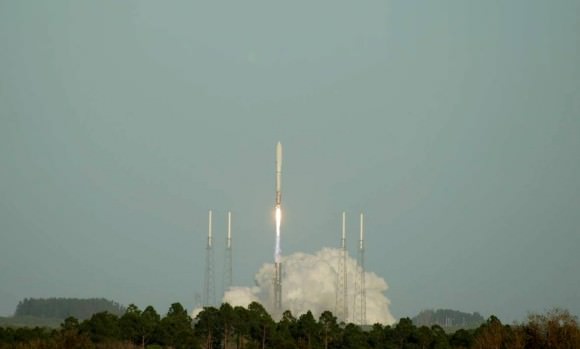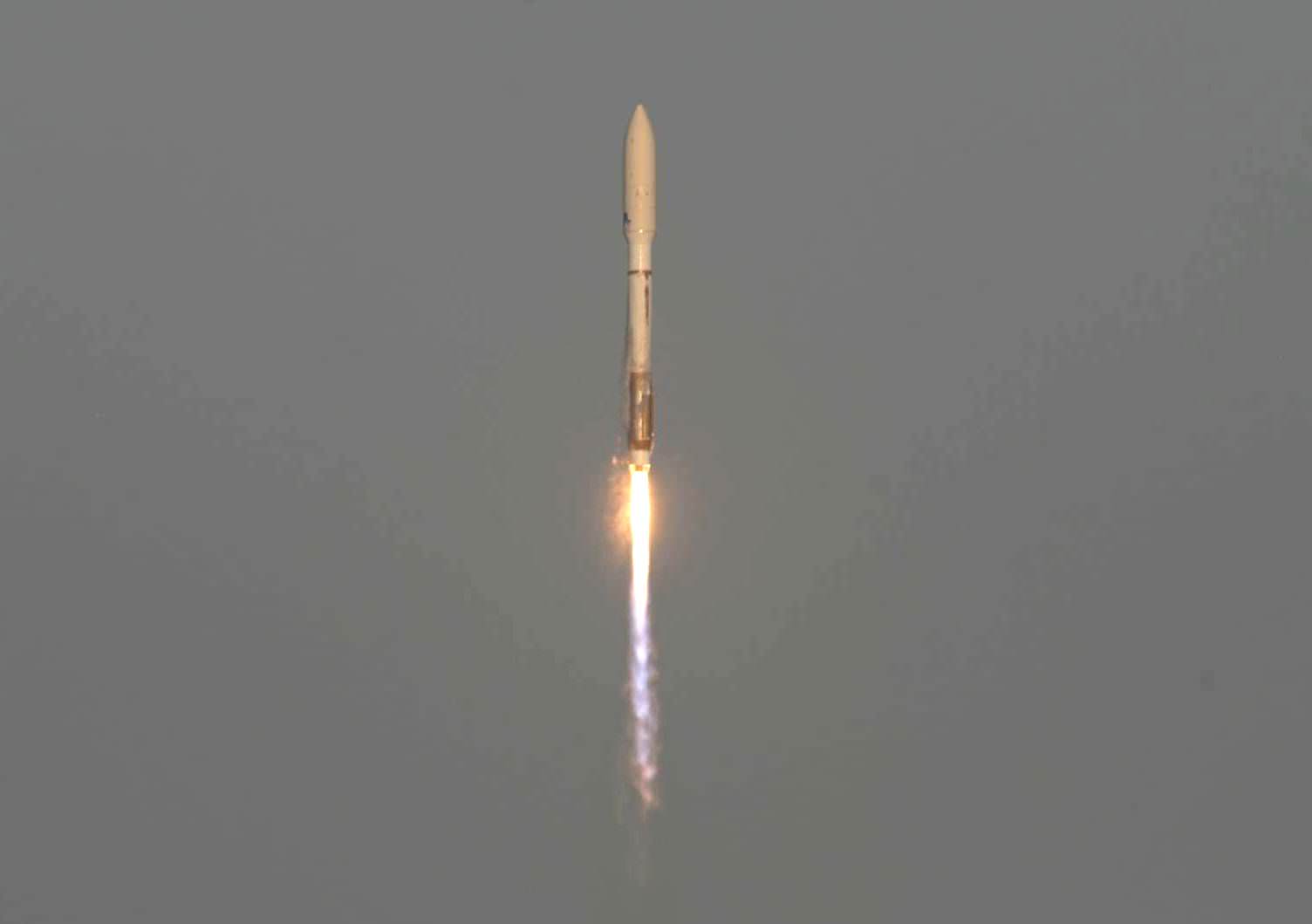[/caption]
CAPE CANAVERAL – Much has been made about the secretive nature of the Orbital Test Vehicle (OTV). Better known as the X-37B, the second of the U.S. Air Force’s OTVs roared off Cape Canaveral Air Force Station’s Launch Complex 41 at 5: 46 p.m. EDT. The Atlas V 501 thundered off of the launch pad carrying the second of the two OTVs into orbit.
The launch was to take place on Mar. 4, but looming cumulus clouds, high winds and rain pushed the launch back a day. The first launch window today opened at 4:09 p.m. EDT, however technical issues required minor work out on the launch pad and it was decided to try for launch during the second launch window’s opening.

The first OTV, USA-212 lifted off from the exact same launch pad on 22 April 2010 and returned to Earth on Dec. 3, 2010. The return to earth tested out the space planes heat shield as well as the vehicle’s hypersonic aerodynamic aspects. The space plane is small enough to be carried within the U.S. space shuttle’s payload bay, it landed at Vandenberg Air Force Base in California. The craft suffered a tire blowout upon landing, but landed safely.
“The X-37B is a scientific achievement as well as a tremendous step in space operations. By itself, the ability to put a vehicle in space, conduct experiments and tests for close to nine months and then have that vehicle autonomously de-orbit and land is an important accomplishment,” said Major Tracy Bunko an Air Force spokeswoman. “This gives the Air Force the ability to examine how state-of-the-art, highly complex technologies will perform in space before they are made operational is an important cost-saving, risk-reducing capability.”
U.S. Air Force officials stated that the X-37B program has the potential of making space experiments much more affordable. This would allow future experiment designers to focus their resources and funds on technology and innovation rather than on what they currently are forced to expend them on – basic services, redundancy and ground operations.

